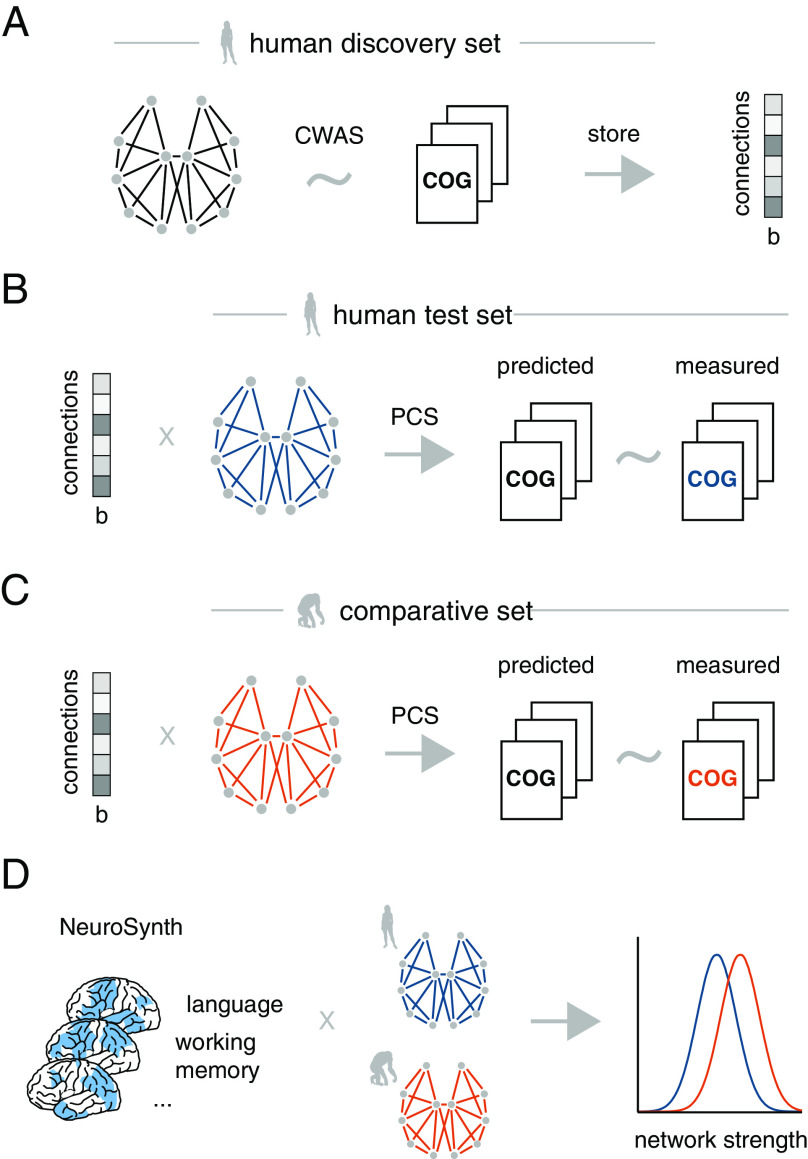Fig. 1.
Study overview. (A) Human Connectome Project (n = 480) data were used to perform a connectome-wide association study (CWAS), correlating the strength of connections in the connectome with a summary score of cognitive performance of the individuals. The regression coefficients of the most strongly associated connections were stored as summary statistics. (B) The stored regression coefficients were multiplied by the corresponding connection strengths of a separate human test set (HCP, n = 572 nonoverlapping subjects) to calculate a polyconnectomic score (PCS), reflecting a predicted cognitive score for every subject in the test set. Predicted scores were correlated with the measured empirical cognitive scores to evaluate the performance of the CWAS analysis in humans. (C) Human CWAS summary statistics were applied to a sample of chimpanzee subjects by multiplying the stored (human) coefficients by the corresponding connection strengths of a chimpanzee dataset. The predicted chimpanzee cognitive scores based on the human CWAS data were correlated with the measured empirical cognitive scores in chimpanzees to evaluate whether strength of connections associated with cognition in humans also predicts individual variation in cognitive performance in chimps. (D) Functional cognitive systems (161 in total, among others, “language” and “working memory”) were mapped by taking functional activation maps from the NeuroSynth database mapped to the DK-114 cortical atlas. Normalized connection strength for the examined functional systems was calculated based on the human and chimpanzee connectome, and compared across species to identify brain functions that displayed a more prominent role in the human versus the chimpanzee brain network. Icons from phylopic.org. Brain plots visualized with Simple brain plot (36).

